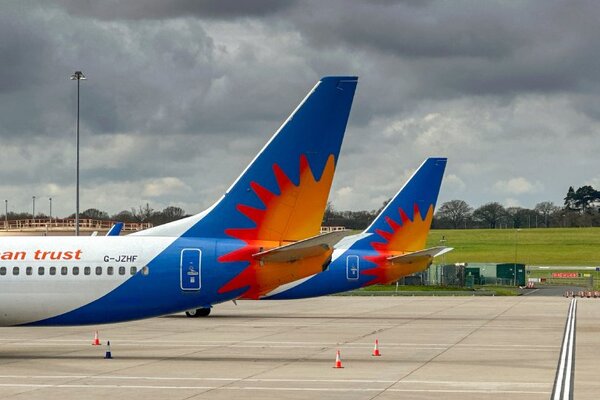Has travel hit ‘peak package’? Or is there more to come?
 Gary Noakes
Gary NoakesWith Atol authorisations hitting their highest levels ever, Gary Noakes dissects the latest round of Atol renewals – and explores where the industry has hit "peak Atol".
If anyone tries to tell you the package holiday is dead, point them towards the September Atol renewals.
Dig a bit deeper into the figures and you will find a 10% increase in licensed passengers, which comes on top of a 20% leap last year.
It prompts the question of whether the industry has hit "peak package", or if there is more to come.
September is the bigger of the twice-yearly renewals, when two-thirds of Atol holders recalculate, right-size and renew their licences. This time, authorisations jumped 5% to a record 33.3 million – an increase of exactly seven million in just two years. Proof, if ever it was needed, of the Covid bounce-back.
Plus, if you discount the anomaly caused by Booking.com reducing its Atol by exempting 1.1 million flight-only sales, the increase for the majority of the industry brings year-on-year growth among all Atol holders “closer to 10%”, according to Atol specialists The Travel Trade Consultancy (TTC).
In another first for the industry, there is now a single brand authorised to sell more than seven million Atol-protected packages in the form of Jet2holidays.
Moreover, operators are reclaiming the top of the Atol league table from the OTAs, with easyJet holidays moving up to fourth place after adding 750,000 heads to its Atol – an increase of one third and evidence more easyJet airline inventory is being directed towards its tour operation.
So sfter the lean Covid years, the package is thriving. But has it peaked?
“I don’t know if there is enough demand in the market to support another 10% increase after almost 20% last year," said TTC director Martin Alcock. "My view is we have to hit peak some time."
‘No capacity constraints’
Looking at the figures, it’s not all relentless expansion. Former market leader Tui UK, now in second place, has made no attempt to regain the top spot it lost to Jet2holidays last year after freezing its main Atol authorisation at around 5.85 million, although Tui’s Marella Cruises brand has increased its Atol by 15% to nearly 410,000, pushing Tui’s total past six million.
Tui’s caution is perhaps an indication its parent company is prioritising other markets in its quest for global expansion in the coming months, but its tie-up with Ryanair is due to begin shortly.
This may be a radical move for Tui, but OTAs have profited by using the carrier to offer dynamic packages, and Tui is following suit. Once it sorts its flight supply issue, it can perhaps aim to regain the top slot.
One industry consultant, who did not want to be named, said: “The potential for growth among the larger Atol holders is not as constrained by capacity as in previous eras. If you argue part of the OTA growth is driven by Ryanair capacity, there is more than enough out there to allow for further significant growth.”
At the same time, for market leader Jet2holidays, its expansion may have slowed. It grew its Atol by 5%, adding 327,000 packages – significantly less than the huge 850,000 it added a year ago on top of the additional 500,000 it added in March 2023.
Next summer, Jet2.com will open its 12th base – Bournemouth – having launched one at Liverpool in March this year. At the time, chief executive Steve Heapy told TTG Bournemouth would be its final UK base, saying: “We have no plans for anymore.” Never say never, but it looks like Jet2’s so far relentless expansion could be slowing.
Consolidation at the top
However, there is another factor pulling in the other direction; Air fares have remained stubbornly high following the pandemic, and increased by an average 22% between July and August this year, according to the Office for National Statistics (ONS) – the second largest monthly rise since 2001.
Nevertheless, ONS figures for September show them dropping back month-on-month by almost 35%, bringing them below the average for September 2023. If this fall continues, more demand will come into the market. Alcock said: “You have to have 7-8% price increases just to cover your input costs, mainly from the airline. I think a cooling off in flight prices will be a definite help.”
There are signs high air fares are having an effect on smaller players, with reductions in licences. “They are all projecting 2-3% growth for the winter, while for summer it’s 6-8% down,” said Alcock. “A lot are saying passengers will be flat or down. They’re saying passenger numbers have topped out."
Alcock said niche players were secure, if not expanding, but warned those caught in the middle lacked the funds to develop technology bigger mainstream brands could use to their advantage.

All the evidence points towards smaller players struggling and the bigger brands taking more of the market. Despite Tui’s stagnation, the top 10 Atol holders now constitute 80% of total Atol capacity.
TTC points out that in October 2019, the last renewal before Covid, the top 10 represented just 65%. Indeed, Jet2holidays’ licence alone now amounts to a huge 21% of the total Atol market.
Alcock cautioned: “Sometimes there is a game being played in the public domain showing who is top dog – there can be a really small incremental cost to adding a few hundred thousand passengers.”
Consolidation at the top means a smaller number of Atol holders are authorising more passengers. Some of this leakage is at the bottom of the league, where the number of Small Business Atol holders – those with authorisations for up to 500 passengers – has fallen from 645 to 498 in five years.
‘Peak Atol’?
On the demand side, there is still a "halo effect" for Atol-protected packages following the pandemic and the collapse of Thomas Cook in 2019.
“I don’t see the in-house tour operators moving away from Atol protection," said the anonymous consultant.
"But if demand is impacted by price, then it must be conceivable the OTAs may look to change their models in some way – assuming that is possible. It’s difficult to change models overnight, and any reduction in this area may well be offset by continuing growth among the in-house operators."
They added: "It does feel like we may not yet be at "peak Atol", particularly as there may well be significant further growth by easyJet holidays. But as always, world and macro-economic events do have a horrible tendency to intervene in the outbound travel market."
The Atol figures are one of the few indications of which way the industry is moving, but they are just an indication – the CAA only reveals firm data after the financial year has concluded.
It is then we will see whether the bluster lives up to reality, and if the industry has scaled the peak once again.
Gary Noakes is a senior contributor and analyst at TTG.
Travel's top 10 Atol holders as of October 2024
- Jet2holidays – 7,043,718 (+5%, up from 6,716,305)
- Tui UK – 5,851,929 (+/-0%, down from 5,858,663)
- We Love Holidays (Loveholidays) – 4,014,688 (no change, spring renewal)
- EasyJet Holidays – 3,055,272 (+33%, up from 2,306,061)
- On the Beach – 2,149,841 (no change, spring renewal)
- Booking.com – 1,271,348 (-47%, down from 2,387,509)
- British Airways Holidays – 1,178,956 (+9%, up from 1,083,426)
- BravoNext SA (Lastminute.com) – 754,465 (+1.5%, up from 742,922)
- Marella Cruises – 409,852 (+15%, up from 355,521)
- Expedia Group – 339,644 (+12%, up from 303,649)
Sign up for weekday travel news and analysis straight to your inbox

Gary Noakes
Supplier Directory
Find contacts for 260+ travel suppliers. Type name, company or destination.














